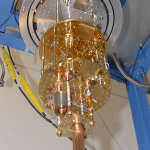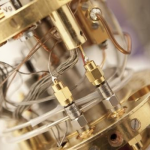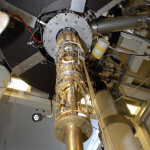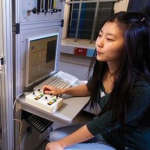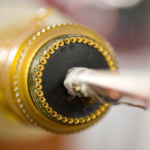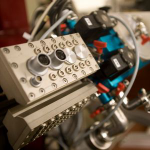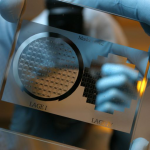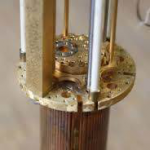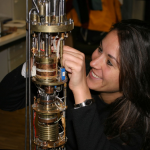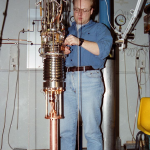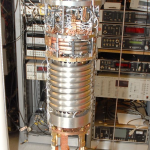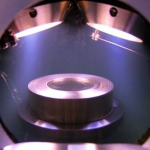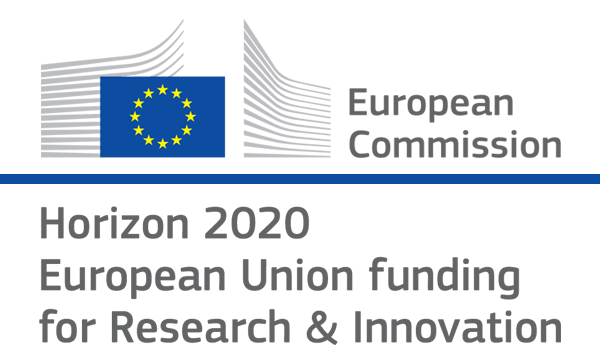

- Photon Transport in a Bose-Hubbard Chain of Superconducting Artificial Atoms
G. P. Fedorov et al., Phys. Rev. Lett. 126, 180503 (2021) - Path-Dependent Supercooling of the
He3 Superfluid A-B Transition
Dmytro Lotnyk et al., Phys. Rev. Lett. 126, 215301 (2021) - Superconductivity in an extreme strange metal
D. H. Nguyen et al., Nat Commun 12, 4341 (2021) - High-Q Silicon Nitride Drum Resonators Strongly Coupled to Gates
Xin Zhou et al., Nano Lett. 21, 5738-5744 (2021) - Measurement of the 229Th isomer energy with a magnetic micro-calorimeter
T. Sikorsky et al., Phys. Rev. Lett. 125 (2020) 142503
Exceeding the Landau speed limit with topological Bogoliubov Fermi surfaces
S. Autti, J. T. Mäkinen, J. Rysti, G. E. Volovik, V. V. Zavjalov, V. B. EltsovA common property of topological systems is the appearance of topologically protected zero-energy excitations. In a superconductor or superfluid, such states set the critical velocity of dissipationless flow vcL , proposed by Landau, to zero. We check experimentally whether stable superflow is nevertheless possible in the polar phase of p -wave superfluid 3He , which features a Dirac node line in the energy spectrum of Bogoliubov quasiparticles. The fluid is driven by rotation of the whole cryostat, and superflow breakdown is seen as the appearance of single- or half-quantum vortices. Vortices are detected using the relaxation rate of a Bose-Einstein condensate of magnons, created within the fluid. The superflow in the polar phase is found to be stable up to a finite critical velocity vc ≈ 0.2 cm /s, despite the zero value of the Landau critical velocity. We suggest that the stability of the superflow above v cL but below v c is provided by the accumulation of the flow-induced quasiparticles into pockets in the momentum space, bounded by Bogoliubov Fermi surfaces. In the polar phase, this surface has nontrivial topology which includes two pseudo-Weyl points. Vortices forming above the critical velocity are strongly pinned in the confining matrix, used to stabilize the polar phase, and hence stable macroscopic superflow can be maintained even when the external drive is brought to zero.
Phys. Rev. Research 2, 033013 (2020)
doi: 10.1103/PhysRevResearch.2.033013
arxiv: https://arxiv.org/abs/2002.11492
